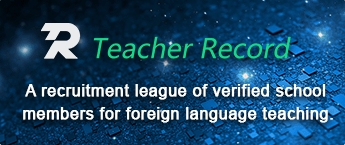Blended Learning in TEFL: Maximizing ESL Success
Demand for English as a Second Language (ESL) instruction has skyrocketed due to globalization. Online teaching has become an effective means of meeting this demand; one instructional method that has gained prominence in this digital era is blended learning. It combines elements from both traditional classroom instruction and virtual classroom study for maximum efficiency and effectiveness.

Understanding Blended Learning for ESL Teaching
Blended learning (or hybrid learning) is a teaching methodology and instructional method that blends synchronous and asynchronous learning methodologies into a cohesive approach. What exactly do these terms entail? Synchronous learning refers to real-time teaching where both teacher and students meet online at the same time for live instruction—often known as teaching "real time"—which may not require students to complete any classwork outside the scheduled meeting times.
On the other hand, asynchronous learning refers to an environment in which students work offline to complete assignments by deadlines set by their teacher, typically submitting work electronically. Blended learning as an instructional method provides the best of both worlds—offering a flexible yet efficient learning environment while catering specifically to each student's unique learning styles and needs.
Blended Learning Advantages in Online ESL Classrooms
Blended learning has many advantages in online ESL classrooms. One major one is its ability to combine the best features of both synchronous and asynchronous learning while attenuating any negative traits associated with either. Furthermore, this instructional method maximizes face-to-face time teachers have with their students, making each moment count!
Blended learning allows for real-time interaction, instant feedback, and collaborative learning—creating the traditional classroom experience virtually—with immediate feedback and collaborative activities such as sharing materials as needed and peer reviews. Meanwhile, its asynchronous component offers flexibility; students can work at their own pace, review materials as necessary, and engage in deep and thoughtful learning—respecting individual student pace without creating stress from keeping up with everyone else.
Blended Learning for Online ESL Teaching
Integrating blended learning as an instructional method in online ESL teaching requires creativity and resourcefulness. For young learners, teachers may utilize various engaging activities such as unboxing videos, product reviews, book introductions, karaoke parties, or cooking class projects. These can provide fun activities that allow children to develop language skills in an engaging and playful manner.
For adult learners, activities may include more advanced approaches like discussion boards, creating mini-books, making presentations, and attending book circles. Such activities can stimulate critical thinking while encouraging adult students to express themselves clearly in English, thus improving their language proficiency.
Synchronous and Asynchronous Learning: Understanding the Difference
Both synchronous and asynchronous learning offer unique advantages; understanding their differences is integral for effective teaching. Synchronous learning takes advantage of real-time interaction to deliver immediate interaction and feedback in a real classroom-like setting, where teachers and students alike can participate in lively debates and collaborative tasks.
Asynchronous learning offers flexibility; it enables students to study at their own pace, accommodating various learning styles and schedules. It also encourages self-paced learning, which fosters autonomy and responsibility among participants. As part of a blended instructional method, asynchronous learning may prove particularly helpful for adult learners who must juggle work-life responsibilities alongside academic pursuits.
Enhance Student Engagement and Participation Through Blended Learning
Blended learning is more than a teaching methodology; it is an engaging and interactive instructional method that can significantly increase student participation and engagement. Combining both synchronous and asynchronous activities allows students to practice all four language skills: reading, writing, listening, and speaking.
Blended learning encourages students to assume more ownership of their learning process. As they move through various activities at their own pace, they become more invested and engaged with the process—fostering deeper comprehension of language skills and long-term retention of these new competencies.
Blended learning in online ESL teaching is an extremely powerful instructional method that can completely revolutionize the student learning experience. It offers flexibility, encourages engagement, and increases language proficiency—three critical ingredients of successful language teaching today. Adopting such innovative methods of instruction helps meet our students' evolving needs while making learning an enriching and enjoyable process. Our responsibility as educators lies in adapting and evolving with changing times to provide the optimal educational experience for our pupils.
-
Quick TEFL Plans for Busy Teachers
Get quick tips for last-minute ESL lesson plans. Adaptability and ready-made plans can make teaching... -
What is EFL: Teaching Proficient Students
Challenges in teaching proficient EFL students. Learn strategies to leverage their unique traits for... -
Mastering English: Navigating Grammar, Vocabulary, and Cultural Nuances
"Learn strategies to conquer English grammar, vocabulary, pronunciation, slang, and regional variati...








